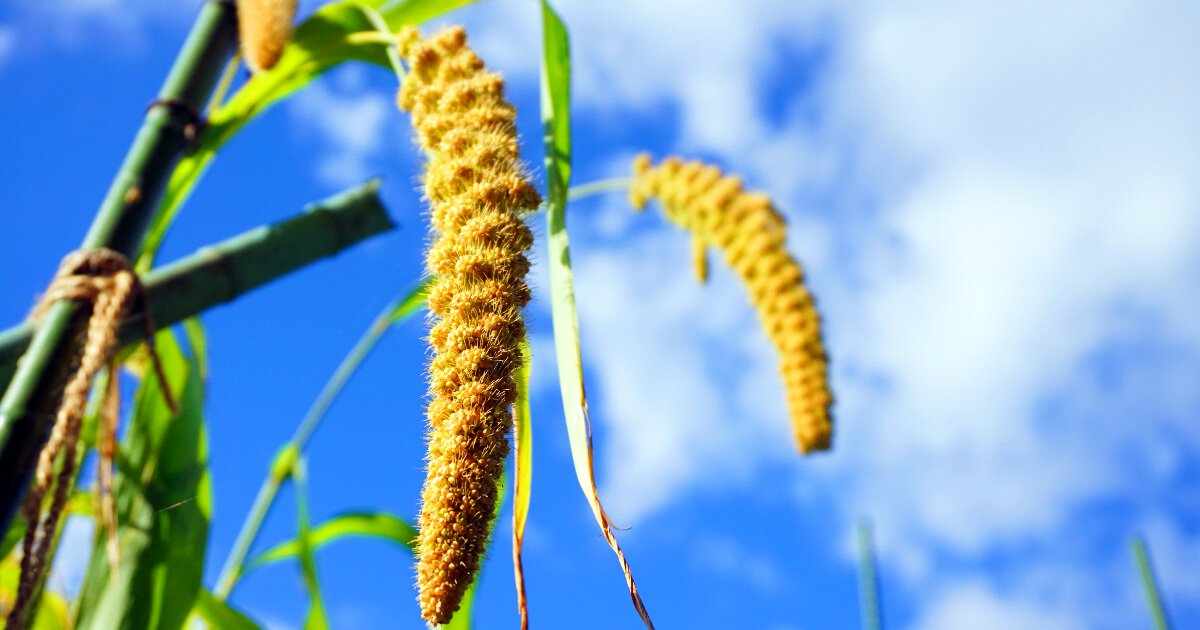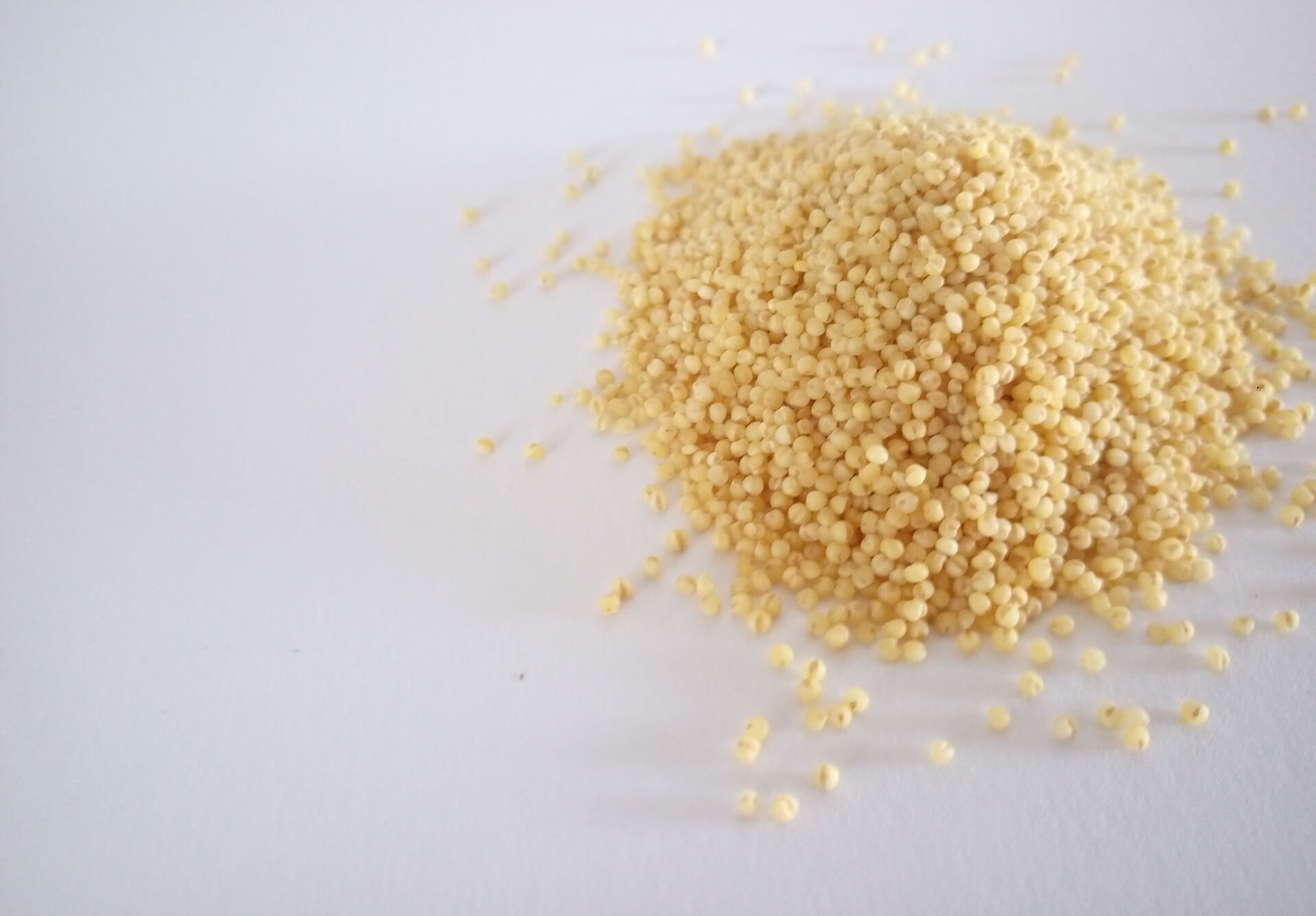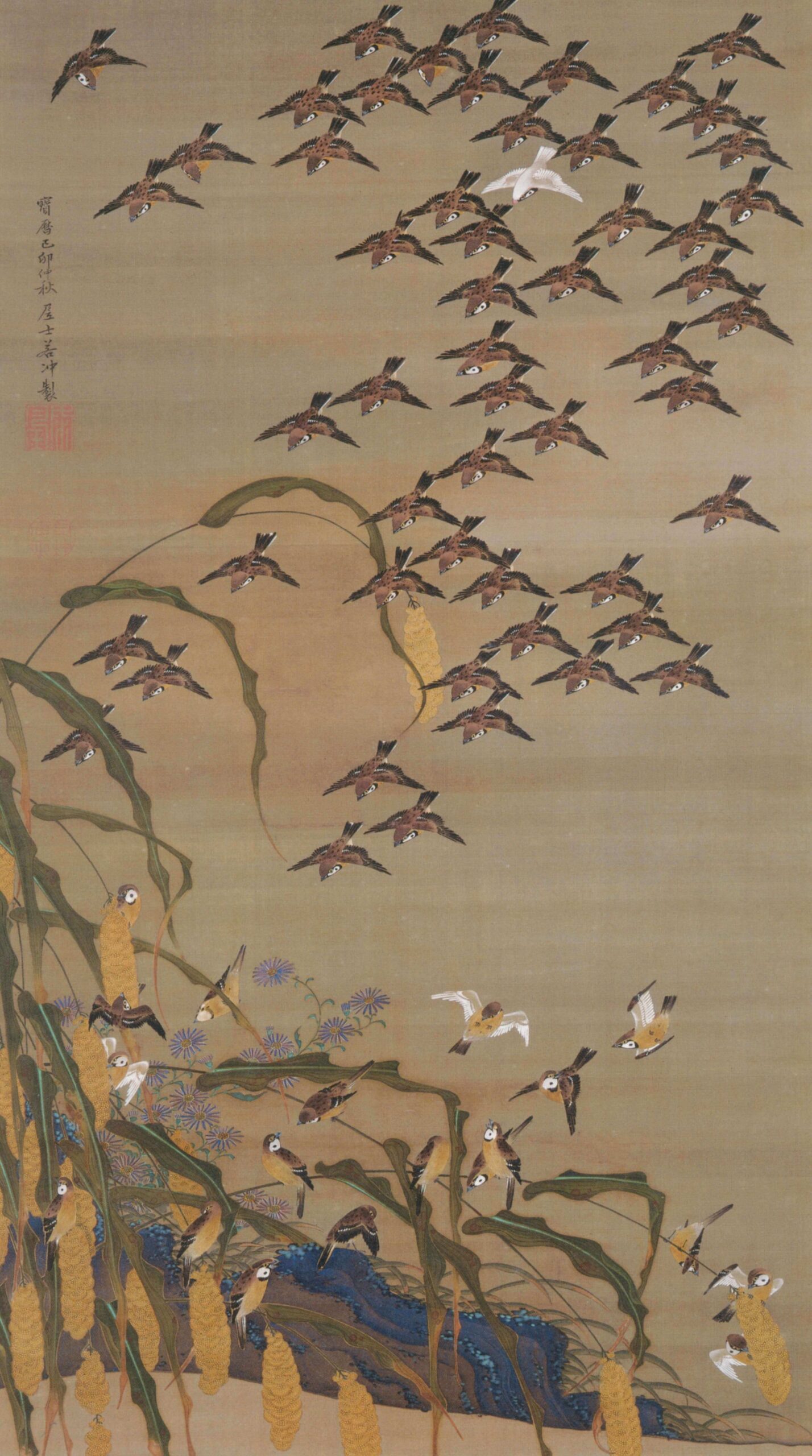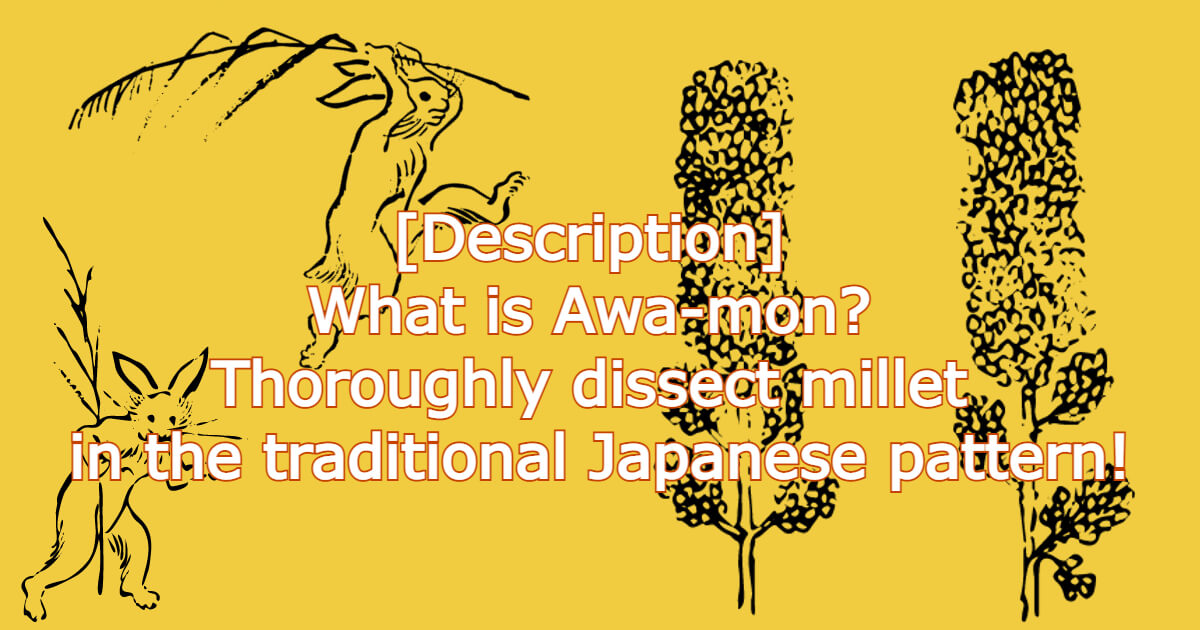The millet pattern(粟文/Awa-mon) was not often used as a pattern for costumes or tools.
It was only in the early modern period that it was incorporated into kimonos and ceramics.
But why was millet, which was probably cultivated long before rice was introduced to Japan, not designed as a pattern? It is very mysterious.
We would like to introduce you to the mysterious millet pattern(粟文/Awa-mon).
What is Millet (粟/Awa)?

Millet is a perennial annual crop of the grass family and is one of the five grains.
In Japan, millet was cultivated earlier than rice and rice, and has been eaten since the Jomon period(15000 to 12000 years ago), making it a very familiar plant.
In the mountain villages of eastern Japan, there is an event called “Awabo-hiebo(粟穂稗穂)” in which people put up millet or millet-like crops in their gardens to pray for a good harvest.
So millet was the source of food for the Japanese!
 Recently, it has been attracting a lot of attention as a healthy food!
Recently, it has been attracting a lot of attention as a healthy food!
There are two types of millet, the mochi(glutinous rice) type and the uruchi(nonglutinous rice) type, and they are small grains with a diameter of about 1.5mm.
It is divided into red, yellow and purple millets according to the colour of the shell, and there are many varieties.
Compared to other minor grains, it is sweeter and less peculiar, so it is also used to make sweets.
Millet is also a rich source of iron, vitamin E and pantothenic acid.
Pantothenic acid is a trace element essential for the metabolism of the three macronutrients (protein, carbohydrate and fat), and has a detoxifying effect, making it an excellent powerhouse for the immune system.
Millet is a superfood!
About millet pattern(粟文/Awa-mon)

family crest:hug millet(Daki-awa)
家紋:抱き粟(だきあわ)
参考:家紋のいろは
The millet pattern(粟文/Awa-mon) is a new pattern.
It seems that the millet, which produces its ears at the same time as the silver grass, was regarded as an autumn plant in the marshes rather than a grain and made into a pattern.
There are also other types of patterns such as the circle with a single millet, the embracing millet, the unusual embracing millet, the different embracing millet, the circle with a millet inside, and the circle with a different embracing millet.
Some of them are very similar to the rice crest of the same crop and difficult to distinguish.
These crests are used by the Awata(粟田) and Awasawa(粟沢) clans, whose surnames include the character for millet.
Design using millet pattern(粟文/Awa-mon)

Jakuchu Ito, “The Sparrows of Akitang” (1759)
伊藤若冲 「秋塘群雀図」 (1759)
Photo From:パブリックドメインQ:著作権フリー画像素材集
It’s not very informative …
I will add it as soon as I find it!





コメント